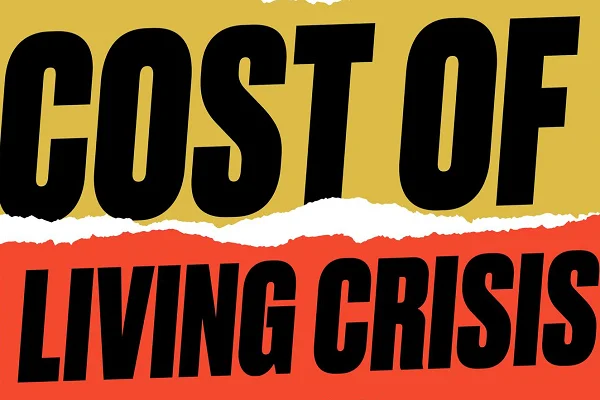Cost of Living Crisis: Homeowners Stretch Mortgages to 35 Years
During the pandemic, the government’s incentive to remove the stamp duty levy on all properties up to £500,000 sparked a rush for buyers to purchase larger and more expensive properties by taking out home loans for extended periods. There is a prediction from experts that the cost of living increases we are currently experiencing could be the result of a surge in 35-year-plus mortgages.
The stamp duty tax relief meant that buyers could save up to £15,000 when buying a new home before it was tapered down in June 2021 and finally stopped in September 2021. Data reveals that the number of 35-year-plus mortgages increased significantly towards the end of both of these periods.
A typical mortgage term is 25 years, which is the time period over which a home loan is paid. Figures released by Quilter, a wealth management firm, show that in June 2021, there were 35,046 mortgages sold with payment terms of 35 years or more. This equates to an increase of 209% when compared to the previous June.
September 2021 showed a growth of 73% in longer-term mortgages, rising from 16,066 in September 2020 to 28,112 the following year.
Data shows that buyers have been stretching themselves financially in order to buy at a time when house price hikes were at a high, with the average home cost increasing by 13.2% in the year to June 2021.
The reason most will have opted for a 35-year-plus mortgage was to meet their monthly repayments on properties that would be too expensive over a shorter term. By spreading the loan, monthly payments are reduced.
David Hollingworth, associate director at broker L&C Mortgages, says that the longer-term mortgage has been a growing trend in recent years.
‘We do know that there has been an increase in borrowers structuring their mortgage over longer terms for a number of years now, often driven by high house prices,’ he says.
‘Taking a longer-term will help give buyers a bit more flexibility in their monthly budgeting by reducing the monthly payments on a repayment mortgage.
‘That helps with affordability and can be a comfort to first-time buyers taking their first step on the ladder who may want some breathing space in the early stages.’
But will the ever-increasing cost of living make longer-term mortgages more common than not? With increased monthly outgoings and house price increases (11% increase to the end of March), it is expected that more buyers will take this option.
Mortgage interest rates are also on the rise, leading to many homeowners looking for ways to decrease their monthly mortgage burden by remortgaging their property using a longer-term mortgage. Longer-term home loans generally allow the buyer to lend more money so that they can also buy a bigger or better property.
Martijn van der Heijden, chief financial officer at mortgage broker and lender Hibito, said: ‘For some people, the impact of inflation will take a big toll on their monthly outgoings.
‘We’ve had inquiries from customers wanting to remortgage to change their term from 20 years remaining to 30 years remaining to reduce their monthly repayment amount.
‘With some incurring national insurance tax rises, alongside frozen income tax thresholds and frozen student loan repayment thresholds, we could see more customers looking to extend their mortgage terms to make their monthly repayments lower.’
There are some risks associated with taking out a long-term loan. You will need to carefully consider the interest rates being offered.
‘Other than the obvious appeal of lower monthly payments, there’s not much to back the case for longer mortgage terms,’ stated Hollingworth.
‘It will come with a cost in the longer run in terms of the total interest payable over the life of the mortgage.
‘Paying the mortgage back more slowly means that more interest will be charged, and that can amount to tens of thousands of pounds.’
The fact that the extension of the loan term could take some people right into retirement is something that should be given consideration.
Hollingworth says: ‘A long term won’t always be an option, as lenders will consider your age at the end of the mortgage term and won’t simply allow a 40-year term to be taken time after time.’
Another disadvantage is that it will slow down the pace at which a homeowner can gain equity in the property.
‘It’s also worth bearing in mind that paying off the mortgage more slowly will mean that the mortgage represents a higher proportion of the property value for longer, so it might not allow a drop into lower loan value bands as soon,’ says Hollingworth.
‘If prices are climbing, that may not be a problem, but if the market is flat or falls back, then it could limit options.’
At the end of the day, opting for a 35-year-plus mortgage will help to alleviate the current escalation of household bills and the cost of living, but may in the long run result in thousands of extra pounds being spent.
Lenders Withdraw 500 Mortgage Products in a Single Month as Great Deals on Mortgages Become a Thing of the Past
More than 500 mortgage deals have been made unavailable by building societies and banks over the last month, with home buyers being left with no other choice than to take on mortgages with high-interest rates.
According to Moneyfacts, an institution that provides financial information services, when compared with data from the beginning of February, there were a whopping 518 fewer deals available at the beginning of March.
This indicates the biggest monthly drop in mortgage deal availability since May 2020, when, as a result of the COVID-19 pandemic and the economic uncertainty it brought, a massive 626 mortgage products were dropped.
The current number of mortgage products on the market for buyers to choose from is 4,838, which indicates a drop of 384 products from March 2020, when the pandemic first hit.
Lenders have removed these products as a direct response to the increased base rate set by the Bank of England. Some lenders have removed whole products from the market, while others have stopped lending for certain deposit sizes.
Further to this, the shelf life of some mortgage products has been reduced by 14 days over the last month, meaning potential home buyers have, on average, just 28 days to secure their preferred mortgage deal.
For five months in a row, both two-year and five-year fixed-rate mortgage interest rates have risen by 0.21% and 0.17%, respectively. The two-year fixed average rate, at 2.65%, is the highest seen since November 2015.
This is not good news for homeowners coming to the end of their two-year fixed-rate mortgage deal, who will find it extremely challenging to find another fixed deal at a decent interest rate, and they will find it virtually impossible to get a better one than they have previously enjoyed. This will become particularly relevant if the homeowner has little to no equity in their property, thereby making it difficult to access a higher LTV (loan-to-value) band and more competitive interest rates.
Five-year fixed-interest mortgage rates are showing their highest figures, at 2.88%, since April 2019. Homeowners approaching the end of their fixed rate deal may still have the opportunity to find a decent deal on a five-year fixed rate, as the average rate has stayed at 2.93%, which is 0.05% lower than what it was in March 2017.
The only mortgage products that showed signs of improved availability were 5% deposit loans, with seven new deals being added to the market. March 2022 was the first time that a 5% mortgage with a two-year fixed interest rate has shown an increase of 0.06% up to 3.11% since April 2021.
Even though the base rate set by the Bank of England has no direct effect on fixed interest rates, lenders typically increase their rates to cover any increased borrowing costs that will most definitely arise.
Last summer saw mortgage interest rates hit a historical low, with interest rate deals available at as little as 0.83%. This was largely due to lenders wanting to capitalise on a buoyant market and the fact that lending costs were at an all-time low, with the Bank of England lowering the base rate to 0.1%. This was subsequently increased to 02% in December, followed by another increase in February 2022, to 0.5%, with the expectation that further rises will be seen in the months to come.
Eleanor Williams, a finance expert at Moneyfacts, said: ‘Borrowers contemplating securing a new mortgage deal may be disheartened to see that rates are continuing to rise this month.
‘While factors beyond lenders’ control are uncertain, as the cost of living crisis continues and economic conditions are volatile, to mitigate the risk of default, it could be that providers may tighten their lending belts even further moving forward.
‘Borrowers looking to get onto the property ladder or to remortgage may therefore be wise to seek advice to ensure they are abreast of the changing market and to move forward with securing the most suitable deal for them.’
Finding a good fixed-interest deal
There are still many decent fixed-term deals out there that are significantly lower than the average figures provided by Moneyfacts, particularly for clients with large deposits and/or equity in their property. Experts warn buyers to consider their options carefully and shop around to find the best deal before committing to any fixed-rate mortgage product.
“Rates have gone up, which will cost homebuyers a little bit more, but I want to stress that this shouldn’t put people off moving to the house of their dreams or taking that first step to get on the property ladder.
‘We’ve seen a sharp and slightly panicky reaction to the Bank of England base rate rising to 0.5 per cent in February, but 30 years ago, in 1992, it was more than 20 times higher at 10.38 per cent. So, we must view this rise with some much-needed context and with a cool head.’
Even though mortgage interest rates are still relatively low when compared with historical figures, the average house price is increasing but not in line with the average income.
Discounts on Green Mortgages for Energy Efficient Landlords
With the upcoming changes to EPC (Energy Performance Certificate) rules, interest in green mortgages is on the increase, with many landlords qualifying for great deals on BTL mortgages.
Green mortgages offer incentives to landlords who are willing to upgrade their properties to a high energy efficiency level.
Although there are currently only a few lenders offering green mortgages, there is an expectation that many more lenders will follow suit in the near future. Green mortgages are available, not only to buy-to-let landlords but also to regular home buyers and those looking to remortgage. Buyers are offered a discount on interest rates for homes that are deemed to be energy efficient.
The first green mortgages were offered in June 2021 by specialist BTL lenders, Land bay. The response from buyers and landlords has been extremely positive, with the prediction that many more lenders intend to offer the same type of mortgage product in the near future.
What is an EPC?
An Energy Performance Certificate is a certificate that measures just how energy efficient a property is, which is then awarded a rating ranging from A to G, with A being the most efficient and G the least efficient.
A property that is highly efficient and emits minimal greenhouse gases will be assigned a rating of A, whereas a G rating indicates poor performance in both efficiency and emissions.
An EPC rating inspection is carried out by a qualified energy assessor, who will estimate the average energy use. The assessor will take into account things like hot water, electricity, and gas costs, as well as levels of carbon dioxide emissions when rating a property.
Energy Performance Certificates also suggest improvements that can be made to improve efficiency, with an estimate of the costs of the changes needed and the potential savings the improvements will bring.
EPC’s for rental properties
Rental properties have been required to have an EPC since 2007, resulting in the government now having energy data for around 50% of residential homes in the UK.
Approximately 58% of houses and flats have an energy-efficient rating between D and G. This is largely due to the large number of old houses in the UK and is not surprising when considering that around 20% of all housing was built before 1919.
In direct contrast, 95% of new homes in the UK have ratings between A and C, with the majority having a rating of B.
Landlords have been required, since 2018, to have a minimum EPC rating of E, but new government rules mean that this will change by 2025 when landlords will be required to improve to a C rating for all new tenancies. This will be followed by all existing tenancies reaching the same C rating by 2028.
The changes are due to the ongoing global warming crisis and are part of the government’s strategy to reach the environmental target of zero emissions by 2050. Housing is estimated to contribute 16% of total carbon dioxide emissions, making it imperative that all homes are improved when it comes to energy efficiency, irrespective of whether they are owned or rented.
For landlords to qualify for a discounted green mortgage, the property must have a rating of at least C. Green mortgages are also available for new-build homes.
How can I improve energy efficiency in my property?
There are a few simple things you can do to improve energy efficiency and lower carbon emissions in your home. You can make small changes, like changing lightbulbs, or bigger improvements, such as new double glazing, floor and wall insulation, and solar panels, all of which are highly effective.
The gas boiler is the biggest problem when it comes to carbon dioxide emissions, which can be improved by upgrading to a combination boiler or heat pumps, which are considerably more environmentally friendly than the old-style boilers.
Rightmove Predicts Booming Year for the UK Housing Sector
The past 12 months have brought the kind of property market activity that has not been seen for some time in the UK. House prices have hovered at all-time highs, demand has outstripped supply by a clear mile, and the return of the 95% LTV mortgage was welcomed by many thousands of first-time buyers.
Rightmove believes that 2022 could be another incredible year for the housing sector. Last year, the company recorded the most explosive performance in the housing market since going into business 21 years ago. In turn, Rightmove now believes that housing market activity will return to pre-pandemic levels before the end of the year, with no sign of a slowdown in sight.
Even with inflation at a 30-year high, Rightmove believes that unprecedented demand for quality homes in all key regions of the UK will ensure the sector maintains its momentum. The market’s performance is also set to be bolstered and perhaps even accelerated by the rapid removal of all remaining pandemic restrictions.
Record performance at Rightmove
According to the latest figures published by Rightmove, the company achieved a year-on-year profit increase of an impressive 67%, hitting an annual pre-tax profit of £226 million for the year ending December 31, 2021.
During the same time, total revenues were up by approximately 50% to reach £305 million. Full-year revenues were up 5% compared to pre-pandemic figures in 2019 and a huge 48% higher than recorded at the height of the pandemic in 2020.
“As the market normalises, we expect the number of transactions to return to pre-pandemic levels,” Rightmove said in a statement.
“We remain alert to the macro environment, but Rightmove is not materially impacted by the property market cycle other than in the most extreme circumstances.”
An operating margin of 74% was reported by Rightmove for the period. The FTSE 100 company collects most of its revenues from real estate agents and customers who pay to advertise their homes via its online channels.
Rightmove predicted further growth in revenues as the company continued to scale back the discounts it had been offering during the COVID-19 pandemic to encourage buyers and sellers to make their respective moves.
Shares in the company were up an impressive 5.3% in London early last Friday morning.
A generally positive outlook
The housing market in general is predicted to record a stellar performance throughout the year, with average house prices having once again increased by 9.5% in February compared to the same month in 2021. Average UK property prices are once again hovering at all-time highs in most regions.
On the whole, the average purchase price of a home in the UK is now just under £349,000, up almost 10% since the same time last year, which is the highest annual rate of growth recorded in almost a decade.
In just two years, average UK house prices have increased by around £40,000, effectively pricing millions of would-be buyers entirely out of the market.
Average Rate Growth Hits Five-Year High, ONS Reports
Monthly rent prices are increasing faster than at any time recorded since February 2017, new figures from the Office for National Statistics suggest. A further 2% increase in England was noted in the year leading up to January, while rents in Scotland were up 2.6% during the same time and 1.4% in Wales.
Last month, the average cost of renting a home in the UK reached a new high of £969 per month.
Speaking on behalf of Hargreaves, senior personal finance analyst Sarah Coles commented on the worrying trend of already cash-strapped renters facing even bigger financial challenges.
“Rents are rising faster than any time in the past five years, forcing tenants to choose between squeezing their spending even harder or uprooting their lives,” she said.
“Either way, they’ll end up worse off.”
East Midlands records the fastest growth in the UK
The fastest increase in private rental costs was noted in the East Midlands, up around 3.6% year-on-year. Despite being home to the UK’s most expensive rental properties, the slowest growth over the same period was recorded in London: an increase of just 0.1%.
With no let-up in sight, experts are forecasting further rent hikes for the foreseeable future, at least.
“It looks like rises are set to go further too,” added Coles.
“Those who can’t stretch their finances to cover their costs face the horrible upheaval and expense of moving home. If their current landlord withholds any of their deposit, they’ll have to find more cash to cover this, on top of the moving costs themselves, which means they’ll be worse off, whatever they do.”
“The Royal Institution of Chartered Surveyors research found that a slide in the number of properties for rent and another rise in tenant numbers are filling agents with confidence that rental prices will be on the rise for months or even years. It expects rent to rise to an average of 5% over the next five years.”
A further blow to prospective homeowners
With the housing sector maintaining its record-breaking momentum built up over the past 12 months, average property prices continue to price millions of would-be buyers out of the market entirely.
Over the course of the year leading up to January, average house prices in England hit a new high of £293,000, while the average cost of purchasing a home in Wales hit £203,000. Across the UK, the average market value of a home is now £275,000, the highest in history.
Alan Fitzpatrick, vice president of lending operations at mortgage specialist Hibito, explained the significance of this year-on-year increase.
“This ONS data reflects the year of the Stamp Duty Holiday, from the first deadline in March, the extended deadline in June, and the lower threshold, which was payable until the end of September,” he said.
“To put this incredible one-year price rise into more context, £27,000 would be the 2022 take-home salary post-tax of someone earning £35,000 (more than the UK average full-time salary, which is £31,285).”
Looking ahead, Quilter mortgage experts see an eventual slowdown occurring, but not on such a level as to prove any real value to struggling buyers or renters.
“Any hopes of a downward tick in house prices have once again been dashed,” she said.
“While a reduction in house prices has not yet materialised, it seems inevitable that there will be a slowdown during the coming year, and there are many factors currently at play that could contribute.”
“While the scales of supply and demand remain firmly tipped in favour of the nation’s home sellers, there’s a good chance that the high rate of house price growth seen during the pandemic will now subside, replaced by more incremental gains during the year ahead,” he said.
Nationwide: Average House Price Hits Record high of £255,000
Average house prices in the UK have hit another all-time high. According to Nationwide, a typical home in the UK had a value of £254,822 in December, an increase of just under £24,000 compared to January last year.
But like most other major lenders, Nationwide predicted a gradual slowdown for the sector over the coming months, due in part to the withdrawal of the government’s temporary stamp duty holiday.
In addition, Nationwide believes that the spread of the Omicron variant of COVID-19 could adversely affect the market’s performance.
“The Omicron variant could reinforce the slowdown if it leads to a weaker labour market,” Nationwide’s chief economist, Robert Gardner, said.
Mr Gardner also said that the inevitability of interest rate hikes over the course of the year will have a “cooling influence” on the sector, which sustained its record-breaking performance throughout much of 2021.
Bank of England base rates were recently increased from a historic low of 0.1% to 0.25%, with more increases on the cards over the coming months. As mortgage rates grow and house prices hover at all-time highs, getting a foot on the property ladder is likely to become increasingly difficult for many first-time buyers.
“House price growth has outpaced income growth by a significant margin over the past 18 months, and, as a result, housing affordability is already less favourable than before the pandemic struck,” Mr. Gardner added.
The UK’s highest-growth regions
In stark contrast to traditional norms, London saw the lowest average property price increases over the course of the last 12 months, up 4.2% to just over £507,000. By contrast, average house prices in Wales skyrocketed by almost 16%, reaching a new high of £196,759.
A brief summary of house price growth by region in 2021:
- Wales: Up 15.8% to £196,759
- Northern Ireland: Up 12.1% to £167,479
- South West: Up 11.5% to £294,845
- Outer South East: Up 11.3% to £329,869
- North West: Up 11.2% to £196,806
- Yorkshire and Humberside: Up 10.8% to £190,855
- East Anglia: Up 10.4% to £268,146
- East Midlands: Up 10.4% to £221,813
- Scotland: Up 10.1% to £172,605
- West Midlands: Up 9.4% to £227,031
- Outer Metropolitan Area of London: Up 8.8% to £410,992
- North: Up 7.7% to £148,105
- London: Up 4.2% to £507,230
Commenting on the figures, Nationwide stated that this was the first time in the bank’s history that Wales had seen the largest annual house price growth of any UK region.
“Price growth remained elevated in Northern Ireland at 12.1%, the strongest end to the year for the region since 2007,” Mr Gardner said.
“Annual house price growth in Scotland was 10.1%, in line with the wider UK.”
Taking out a Mortgage in Your Later Years: Is it a Path to a Better Lifestyle?
According to a report by the Equity Release Council, the number of people expecting to have paid off their mortgages by retirement age is set to significantly decrease in the future. Five thousand participants took part in the study, carried out by the lifetime mortgage trade body, which found that 45% of homeowners under the age of 40 and 29% of those over 40 purchased homes a lot later than they had expected or would have liked to.
The research shows that a third of all homeowners are not confident that they will be able to completely pay off their mortgages by retirement age. Many have completely ruled it out, with 20% feeling that a mortgage-free retirement is completely unrealistic and unachievable.
The report suggests that buyers under 40 are less concerned that they may still be in debt after retirement. Jim Boyd, ERC chief executive, said, “There are clear signs that paying a mortgage in retirement is no longer a taboo.”
He added, ‘One in four mortgaged homeowners said they don’t mind if they are still paying off their loan in later life, while 47 per cent believe their generation’s attitude to debt in later life is more accepting than their parents’.
The research showed that 70% of people with mortgages were comfortable with the level of their mortgage debt, increasing to 75% among the over-50s. Many stated that they felt that taking out a mortgage later in life could significantly benefit them, with nearly one-third suggesting that it may improve their overall lifestyle. Just under one-third of participants felt that it could help them access funds to help out family members.
“Lifetime and retirement mortgages allow people to make the most of property as a source of wealth as well as a home. Our findings suggest later life lending products are likely to be even more important for future generations of retired homeowners than they are today.”
Will Hale, chief executive of equity release advisers Key, said: “While the challenges around homeownership for the younger generations are deep-rooted, the later-life lending industry can be part of the solution.
“The relevance of products such as lifetime mortgages is clear. Attitudes towards debt are changing, and with products now available that offer low rates alongside flexible features and important customer protections, we need to ensure that older people and their families understand all their options and are able to access specialist advice to ensure the right outcomes for their individual circumstances.”
Claire Singleton, chief executive of Legal & General Home Finance, said she was “unsurprised” that borrowers are generally more comfortable carrying mortgage debt into their sixties and seventies. “We know that the increasingly flexible range of products, such as optional payment lifetime mortgages, where customers can opt to pay the interest on their loan, is helping to make later-life borrowing a good choice for many customers.
“For some homeowners, their property is now their most significant asset. Half of homeowners across England and Wales could unlock an average of £72,988 from their homes—above the average pension pot of £61,930. With the right advice, later-life lending can help people make the best use of their property wealth.”
13% Mortgage Interest Payment Hike Forecast by 2023
Startling data published by the government’s independent forecasting unit indicates that homeowners could be headed for the biggest mortgage interest hike seen since 2008.
By 2023, overall interest payable on a mortgage could increase by as much as 13%.
Members of the Liberal Democrat Party have warned that for homebuyers with an average mortgage of £211,000, the increase would constitute an additional £500 in interest payments per year. However, investment firm AJ Bell said that the costs could be even steeper for those with larger mortgages, who may be looking at £1,000 more every year in interest payments.
Interest rates remain at historic lows
For the time being, Bank of England base rates are being held at an all-time low of 0.1%. But both the Bank of England and the UK’s leading economists have warned that significant increases to base rates over the coming year are inevitable.
Specifically, the consensus now points to an initial increase of 0.25%, followed by a further three increases of the same amount to take base rates back to 1% by the end of next year.
In response, many major lenders are already beginning to withdraw their most competitive mortgage deals from their offerings. Brokers have reported major shifts in the mortgage lending market across the UK, with a wide variety of price shifts having taken place during the last few days alone.
The Office for Budget Responsibility data now points to significant year-on-year increases in mortgage interest payments, which could see homeowners facing an increase in costs next year of around 5.6%. This is then predicted to increase to around 13% in 2023, after which it will return to 5.4% in 2024.
The upcoming hike would be the biggest recorded since 2008, potentially leaving millions of homeowners out of pocket.
Higher costs for all mortgage payers
The figures have become a major political point of contention, with the potential costs for all mortgage payers having been highlighted by the Liberal Democrats.
Commenting on the predicted hikes, the party stated that the average mortgage payer at a variable rate of 3.6% would be looking at around £42 per month in additional interest payments, or £510 per year. Those with fixed-rate home loans at 2% would be liable for an additional £25 monthly payment, adding up to £300 per year.
“This ghastly forecast should send a shiver down the chancellor’s spine,” said Sir Ed Davey, Liberal Democrat leader.
Speaking on behalf of AJ Bell, their head of personal finance predicted even greater costs for mortgage payers over the coming years.
“Someone with £250,000 of borrowing who fixed earlier this year and renewed in 2023 would see £600 a year added to their mortgage costs, while someone with £450,000 of borrowing would see their costs hike by £1,068 a year,” she said.








